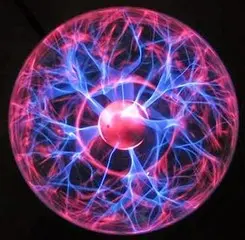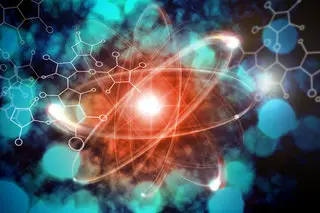Princeton University is ranked first in Plasma Science and University of California-Los Angeles is placed in second.
Plasma is one of the four fundamental states of matter (the others being solid, liquid, and gas). It comprises the major component of the Sun. Heating a gas may ionize its molecules or atoms (reducing or increasing the number of electrons in them), thus turning it into a plasma, which contains charged particles: positive ions and negative electrons or ions. Ionization can be induced by other means, such as strong electromagnetic field applied with a laser or microwave generator, and is accompanied by the dissociation of molecular bonds, if present. Plasma can also be created by the application of an electric field on a gas, where the underlying process is the Townsend avalanche.[read more at wiki]
Academic Factors Comparison Between Best Colleges in Plasma Science Major
5 public and 2 private schools are ranked in the top 10 Plasma Science colleges. The average acceptance ratio of the schools is 30.00% where Princeton University has the tightest acceptance ratio of 7% and University of Wisconsin-Madison has the highest ratio of 53%. Total 231,080 students are enrolled into best Plasma Science schools where The University of Texas at Austin has the largest population with 51,331 students and Princeton University has the smallest with 8,181 students. The average graduation rate is 88.57% and the average students to faculty ratio is 13.86:1 at those colleges.
Next table shows the academic information and key facts of the best Plasma Science colleges including acceptance ratio, graduation rates, student population, and students to faculty ratio.| Rank | Name | Acceptance Rates | Graduation Rates | Population | Student-Faculty Ratio |
|---|---|---|---|---|---|
| 1 | Princeton University Princeton, NJ | 7% | 97% | 8,181 | 5:1 (20.00 %) |
| 2 | University of California-Los Angeles Los Angeles, CA | 18% | 91% | 43,548 | 17:1 (5.88 %) |
| 3 | Massachusetts Institute of Technology Cambridge, MA | 8% | 93% | 11,376 | 3:1 (33.33 %) |
| 3 | University of Maryland-College Park College Park, MD | 48% | 86% | 39,083 | 17:1 (5.88 %) |
| 3 | The University of Texas at Austin Austin, TX | 40% | 81% | 51,331 | 18:1 (5.56 %) |
| 3 | University of Wisconsin-Madison Madison, WI | 53% | 85% | 42,582 | 18:1 (5.56 %) |
| 7 | University of California-San Diego La Jolla, CA | 36% | 87% | 34,979 | 19:1 (5.26 %) |
| Average | 30.00% | 88.57% | 231,080 (Total) | 13.86:1 (7.22 %) |
Best Plasma Science Colleges 2018 Tuition & Fees Comparison and 2019 Estimated Costs
Next table lists 2017-2018 tuition & fees and compares the costs between Best Plasma Science Colleges. The 2017-2018 costs are officially published by IPEDS, U.S. Department of Education. The estimated costs for year 2018-2019 are calculated and estimated based on each school's tuition rates last year.
For the undergraduate programs, the average tuition & fees of best Plasma Science schools is $40,782 where Massachusetts Institute of Technology has the most expensive costs with $49,892 and University of Maryland-College Park has the lowest amount of tuition with with $33,606. The average graduate tuition & fees of best Plasma Science schools is $33,391 where Massachusetts Institute of Technology has the highest tuition with $52,892 and The University of Texas at Austin has the lowest amount of tuition with with $22,178.
| Rank | School Name | 2018 Tuition & Fees | 2019 Estimated Tuition & Fees | ||
|---|---|---|---|---|---|
| In-State | Out-of-State | In-State | Out-of-State | ||
| 1 | Princeton University | $47,140 | $49,054 | ||
| 2 | University of California-Los Angeles | $13,261 | $41,275 | $13,611 | $43,019 |
| 3 | Massachusetts Institute of Technology | $49,892 | $51,374 | ||
| 3 | University of Maryland-College Park | $10,399 | $33,606 | $10,622 | $35,243 |
| 3 | The University of Texas at Austin | $10,398 | $36,744 | $10,713 | $37,838 |
| 3 | University of Wisconsin-Madison | $10,533 | $34,783 | $10,578 | $36,956 |
| 7 | University of California-San Diego | $14,018 | $42,032 | $14,401 | $43,809 |
| Average | $11,722 | $40,782 | $11,985 | $42,471 | |
| Rank | School Name | 2018 Tuition & Fees | 2019 Estimated Tuition & Fees | ||
|---|---|---|---|---|---|
| In-State | Out-of-State | In-State | Out-of-State | ||
| 1 | Princeton University | $48,940 | $50,722 | ||
| 2 | University of California-Los Angeles | $13,003 | $28,105 | $13,331 | $28,429 |
| 3 | Massachusetts Institute of Technology | $52,892 | $54,588 | ||
| 3 | University of Maryland-College Park | $13,884 | $28,122 | $14,542 | $29,498 |
| 3 | The University of Texas at Austin | $11,490 | $22,178 | $11,683 | $22,858 |
| 3 | University of Wisconsin-Madison | $11,988 | $25,314 | $12,033 | $25,359 |
| 7 | University of California-San Diego | $13,085 | $28,187 | $13,085 | $28,187 |
| Average | $12,690 | $33,391 | $12,935 | $34,235 | |



